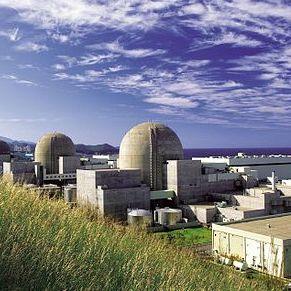Let's pretend that you are faced with a life-threatening cancer, and your doctors tell you that chemotherapy is the only realistic solution available. Would you take it? Most rational people would say yes.
However, when it comes to energy and climate policy, there is little rationality to be found. People who believe that climate change is an existential threat often reject nuclear power -- the only realistic solution -- in favor of wind and solar despite that they are insufficient to power the planet. An excellent article by Michael Shellenberger explains why.
Consider the amount of land that renewable energy requires. Mr. Shellenberger writes, "Solar farms take 450 times more land than nuclear plants, and wind farms take 700 times more land than natural gas wells, to produce the same amount of energy." No wonder such projects face increasing opposition. People don't want these behemoths in their backyard.
Even worse, Germany already experimented with a policy called Energiewende meant to reduce carbon emissions while simultaneously phasing out nuclear power. It didn't work. Not only was it an outrageously expensive way for Germany to fail to meet its emission targets, the country still relies heavily on coal and has become increasingly reliant on Russia for natural gas. As Foreign Policy noted in one of its characteristically subtle headlines, "Germany Is a Coal-Burning, Gas-Guzzling Climate Change Hypocrite."
Mr. Shellenberger sums up the dilemma perfectly:
All of which raises a question: if renewables can't cheaply power Germany, one of the richest and most technologically advanced countries in the world, how could a developing nation like Kenya ever expect them to allow it to “leapfrog” fossil fuels?
The only way to leapfrog fossil fuels is to use nuclear power. While wind and solar certainly can and should play an important role in regions where it makes sense, neither is suitable for a national energy strategy, let alone a global one. It's time to embrace the truth: Nuclear is the best, carbon-free source of energy we have.
A Realistic Solution for Nuclear Waste
But what about the waste? Much of the public believes that the transport and storage of nuclear waste is unsafe. Both fears are unfounded.
As my colleague Dr. Josh Bloom explains, nuclear waste is transported in containers that are just about indestructible. To test their integrity, the containers are dropped from 30 feet onto steel plates and puncture bars, submerged in 50 feet of water, and set on fire with jet fuel that burns at 1425°F. They survive. Likewise, storage is safe, too. The best option, in our opinion, is to utilize the Yucca Mountain storage facility. If Nevadans don't want the waste, we should encourage them by offering "rent" payments.
A new report by The Breakthrough Institute proposes a different solution. It argues that Yucca -- or any single, centralized location -- is not a good solution because the amount of waste we have generated is quite substantial. Yucca would need to be expanded. Instead, the report suggests that we formalize what we've been doing; that is, make decentralized, on-site storage at nuclear power plants in cooling pools and dry casks the official policy. These sites could also be supplemented with regional consolidated storage facilities.
Similar to the plan to pay "rent" to Nevada, the report suggests that all storage sites should be based on community consent. Those that decide to maintain storage facilities would then receive payments from the Nuclear Waste Fund.
It's a fine idea. Unfortunately, activists and politicians routinely fearmonger and spread misinformation about nuclear power, blocking any progress. Perhaps directly appealing to citizens with financial incentives could be the game-changer nuclear advocates need.




